Context is everything, so it is important to remember that the Honan Chapel at University College Cork expresses what, in the years of its making from 1913 to 1916, was an act of colossal spiritual and cultural independence. Independence of any sort could be a risky business at that time in Ireland, yet the spell-binding unanimity of design and intent newly enhanced by the chapel's most recent and probably most important renovation reveals a quality of daring astonishing even now.
"Everything about this building is totally extraordinary," says Peter Murphy of FMP Architects. "It demonstrates a full knowledge of the modernist movement swinging through Europe at the time – you can even find fashion statements in the windows by Harry Clarke. The grilled iron gate is pure art nouveau. How did all that get down to Donovan's Road in Cork?"
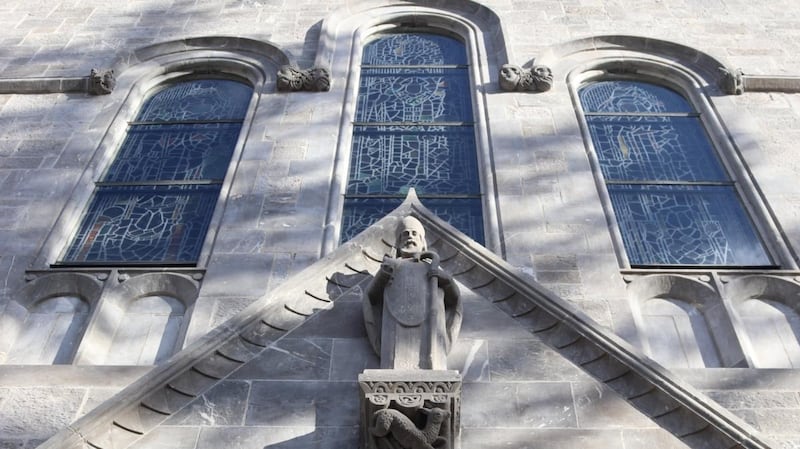
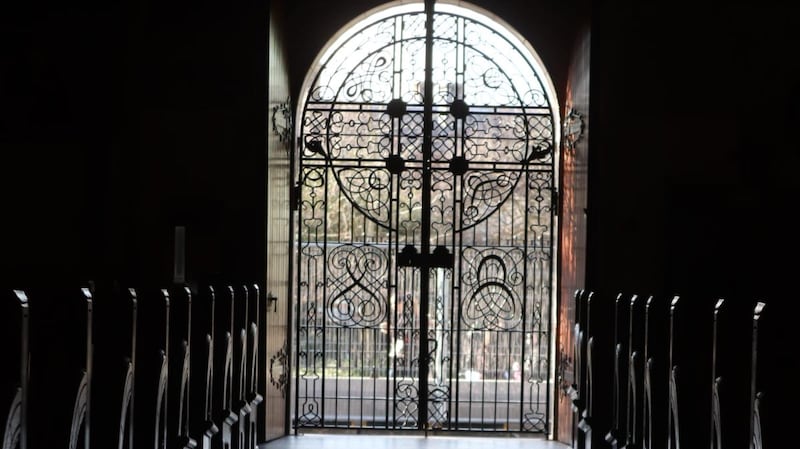
All one sees of the Honan Chapel from Donovan’s Road is a compact arrangement of turrets and newly-repointed limestone walls. The chapel and its gated forecourt are legally and technically outside the university grounds although it is surrounded by later college buildings and only a few yards from the elegant quadrangle of the main campus. The distance is an implied retort as the university at its inception was forbidden by the 1908 Irish Universities Act to spend any of its income on providing “any church, chapel or any other place of worship or observance”.
Bequest
The wealthy Honan family of butter merchants had already been generous to the university when Isabella, the last of three siblings, left a significant estate to be dispersed by her executor, the Dublin lawyer Sir (later Rev) John Robert O'Connell. As the late Mairéad Dunlevy wrote in her introduction to The Honan Chapel, A Golden Vision edited by Virginia Teehan and Libby Wincott Heckett (2004), Isabella "trusted a zealot to develop a fitting living monument to their memory".
O'Connell's zeal as a devout Catholic was to set up a chapel to meet the spiritual needs of the members of the college. His plan was for a "noble and dignified' building, and secure in the support of Sir Bertram Windle, then president of the college, he directed £40,000 from the Honan bequest to the university, using most of the money for the chapel. Inspired also by his own cultural sophistication and resistance to imported materials and popular decorative styles, both zeal and legacy were transfigured not only into a living monument to the Honan family, but into a treasury. It expresses O'Connell's fervent belief that the chapel "must call into life again the spirit and the work of an age when Irishmen built churches and nobly adorned them under an impulse of native genius".
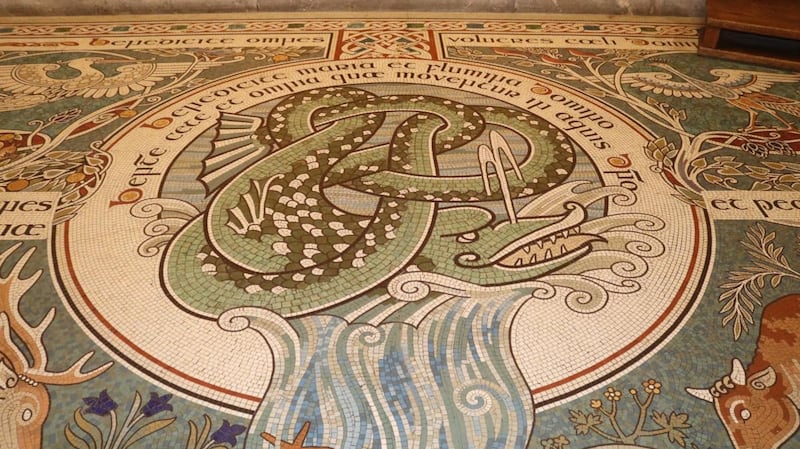
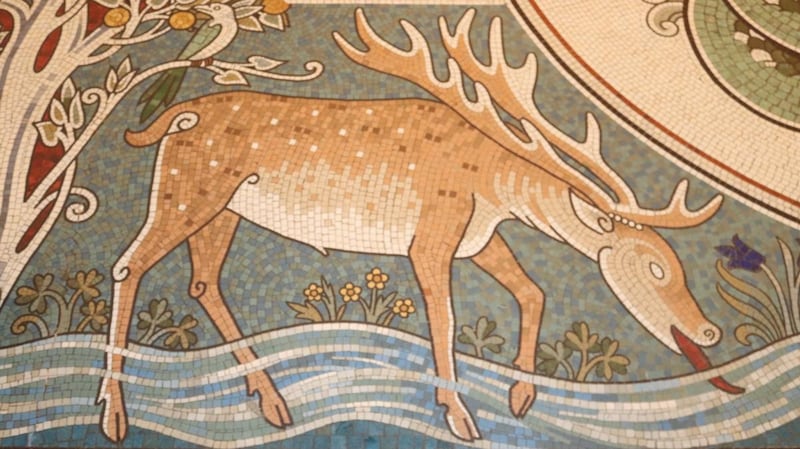
O’Connell spoke of an age a thousand years before. Now, standing dutifully beside Peter Murphy to examine the renewed collars on the external downpipes, or taking a neck-cricking appraisal of the trellised ventilation circles on the barrel-raftered ceiling, the realisation comes that dutiful recent attributions are not enough. Harmony is everything and even context takes a second place to the sheer seduction of a building outwardly restrained but inwardly a reverent blaze of colour and coherence. Native genius, in those confusing years to 1916, seized an amazing opportunity for self-assertion, and the Honan is its affirmation.
That’s why the obligatory technicalities of weep-holes, the repair and waxing of pews, the clever renewal of storm glazing, the conservation plan organised by the Honan Trust in 2019 and enabled by the fundraising management group chaired by property developer Michael O’Flynn to meet the €1.2 million costs remain for the moment a matter of record. As Murphy expands on the design team including conservation engineers Southgate Associates and Michael Barrett Partnership quantity surveyors it is obvious that this contemporary record deserves its architectural and artistic acclaim, but with each name in Murphy’s forensically accurate listing the most obedient eye is helplessly diverted.
Mosaic floor
The chapel's patron St Finbarr by Oliver Sheppard stands above the Hiberno-Romanesque doorway. Almost immediately within runs the woven mosaic flooring representing the river of life in what Paul Larmour has called the most spectacular thing of its type in Ireland. This leads along the arcaded nave to the altar's richly-enamelled tabernacle by Oswald Reeves, forming, as O'Connell put it, "a point of luminous colour where beauty and colour should be concentrated".
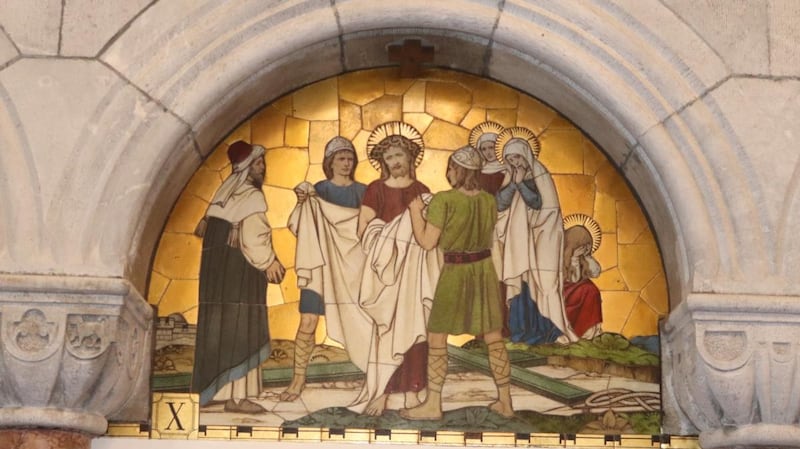
As we make notes and check dates and measurements we are conscious that the work of architect JF McMullen and builders John Sisk and Son was firmly directed by O'Connell's architecturally informed ambition that this chapel would be Irish from the top of its double-slated roof to the Celtic formality of its hinged gates. Two elements escaped him: for the nave flooring and the opus sectile Stations of the Cross he had to go to Oppenheimer of Manchester and in what is probably a sign of the times he omits this fact from his book, The Collegiate Chapel, Cork (1916).
For those of us who lamented the enthusiastic reordering of Catholic churches after the Second Vatican Council in the early 1960s the gleaming beauty of the formerly banished sanctuary lamp hangs like a pulse of memory. "I've seen that lamp, all its silver chains and clasps and bowls spread out for cleaning and repair at Murphy and Quinlan's workshop in Cork," says Murphy as we look at it aloft and infinitely lovely. Its inscription in Irish uncial lettering names the Honans and announces that "Sir John Robert O'Connell Doctor of Laws ordered me to be made".
The maker was Edmund Johnson of Dublin and the designer William Alphonsus Scott, the first professor of architecture at University College Dublin, elsewhere described as "architect by approval to the Celtic Revival". Scott was responsible here for all the chapel's metalwork, much of which, like so many other victims of the Second Vatican Council, is now in storage along with the vestments, illuminated altar cards, tooled missals and altar plate enhanced with gold interlace, amethyst, garnet and rock crystal.
Although the locally-quarried limestone exterior suggests internal calm, the limestone itself bounds inside from pillared reveals and worked columns in chevrons and zigzags as if to control the exuberance of pattern and style within the iconography of their frames. That vitality shines from the 19 windows whose stained glass suggests the tension between artists at Sarah Purser's An Tur Gloine and the upstart rival Harry Clarke. His windows are the Honan's glory, having what Oswald Reeves called "a jewelled gorgeousness of pattern" while, for George Russell, Clarke's figures wore "the robes of paradise" in colours which could not be imagined from any description.
Specialist workers
Acknowledging the help of the city council's conservation officer Pat Ruane (now retired), Murphy remarks that the brief, composed by the Honan trustees, Chaplain Fr Gerard Dunne and UCC's buildings office was to completely restore the church. But meticulous conservation is a slow process demanding patience, and he is grateful for the solidarity of the team of specialist crafts workers led by Joe Costelloe of Stone Mad, whose work will be celebrated in the reopening event on March 21st.
Here as we question the original makers of this place we are surprised by the number of women involved, the women of glass, tile, bookbinding, embroidery, illumination and textiles. Now comes the thought that the ancient language and fabric of liturgy are themselves disappearing. How pertinent then is the Honan Chapel, built for a university community, to the students of today? “They drift in and out, some to study, some to pray, some to attend one of the daily services,” says Fr Dunne. As guardian of the Honan and pastor to the students he believes in the building’s spiritual resonance. “We don’t work by numbers, the value of an ecumenical chaplaincy can’t be counted and with a population of 20,000 here we deal with all faiths and none.”
Even as we talk there is a steady rustle of incomers, revisiting or perhaps discovering how through the wicket gate on Donovan’s Road is a place which demonstrates not only the apotheosis of the arts and crafts movement in Ireland but where to find sanctity compatible with excitement.
(The Honan Chapel at University College Cork is open from 8am to 7pm, seven days a week.)










